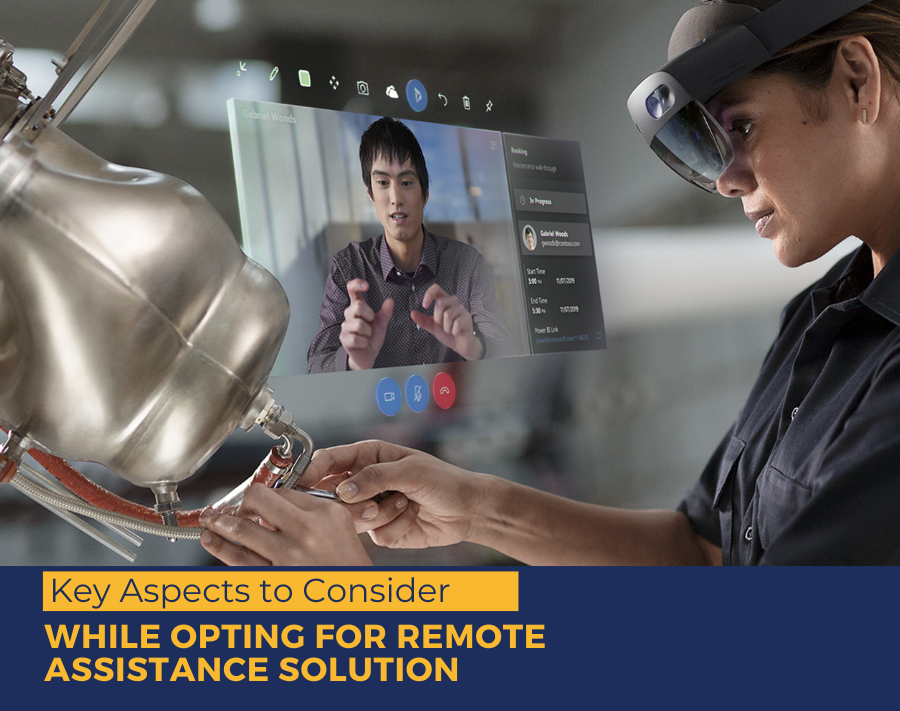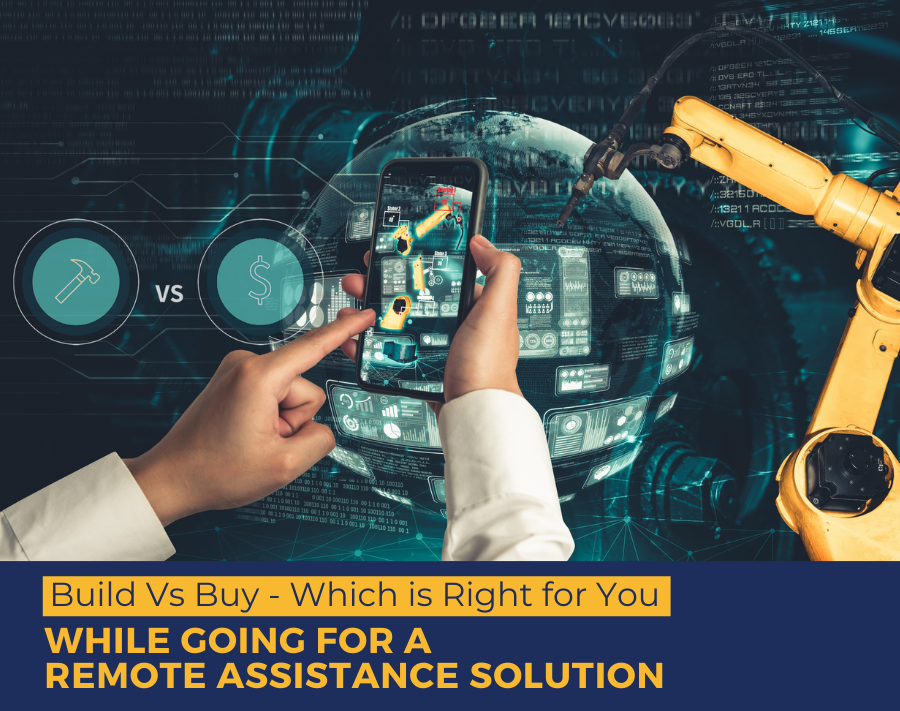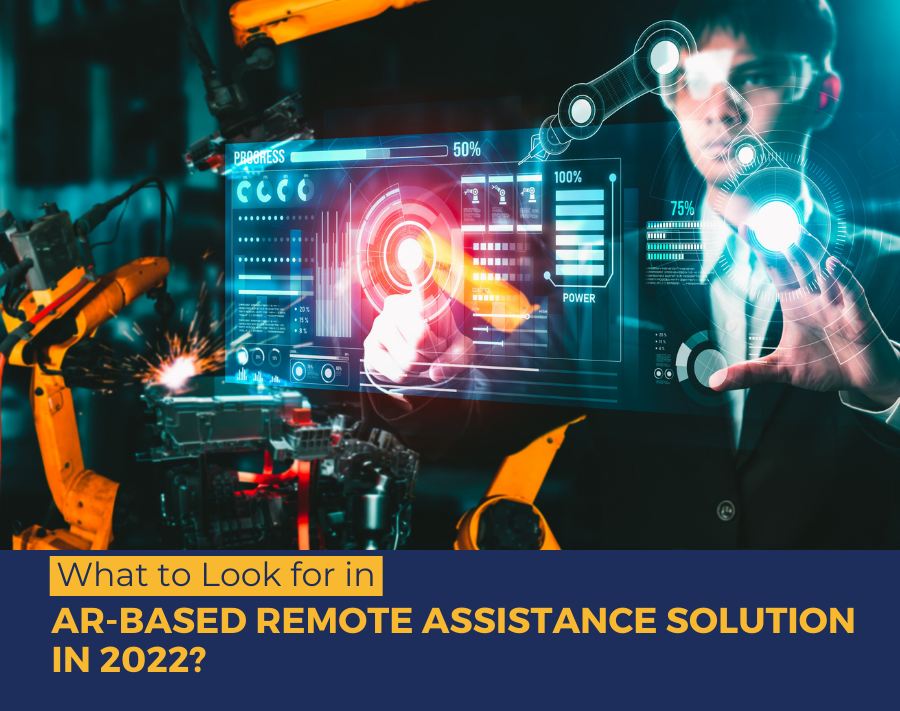Augmented reality is one of the most adopted technologies by companies. Today, businesses utilize this technology for troubleshooting, inventory management, prototyping, remote assistance, and supply chain management. Moreover, it has a rising market. As per Fortune Business Insights, the AR market would be worth a whopping $97.7 billion in 2028.
One of the key aspects where AR excels is remote assistance. Due to the use of AR in remote assistance, a lot of solutions have surfaced in the market. Businesses tend to use them to reduce downtime, manage machine outages, and improve productivity. But, most of them feel perplexed when choosing a remote assistance solution.
Read ahead to find out how you can select the best AR Remote Assistance tool for your company. Let’s start with the role of AR in remote assistance.
Brief on AR Remote Assistance and Its Working
AR remote assistance is an innovative concept that is used by brands and product manufacturers to provide quick and real-time support. OEMs (Original Equipment Manufacturers) and experts use AR to guide remote workers and field agents in resolving their issues.
How AR Remote Assistance Solution Works
The core of AR remote assistance Solution is the combination of live video streaming and AR technology. Let’s take an example!
When a field technician is working on solving a problem, the AR technology will superimpose a virtual image on the physical environment. The brand expert can visually provide instructions along with demonstrations to help the users or agents resolve the issue.
As visual instructions can provide a better understanding to the users, AR can be a great tool for remote assistance.
Factors to Consider before Choosing an AR Remote Assistance App
It is necessary to have some indispensable features in a robust AR-based application. Here we mention some of them.
Locked Digital Annotations
When a technician or a customer is engaged to resolve the issue on their device, digital annotations added to the AR view of the user should get locked. Annotations are an essential part of the AR remote assistance application. They can be in the form of including text, models, pictures, sounds, or haptic feedback.
If these annotations are not getting locked on the reference point, the user or the technician can get confused about which part to repair or which button to press. It can lead to further issues.
Integration
One of the key challenges that you may face with the AR remote assistance tool is integration. If your company’s existing infrastructure is not ready for it, you need to upgrade it first. Moreover, also ensure that the tool is easy to integrate and takes less transitional time. The transitional time should not affect the overall productivity of the business.
Also Read: How AR Helps Equipment Manufacturers in Remote Installation
Compatibility
We live in the device-driven world, where all of us use different types of devices. So, when you are shortlisting an AR remote assistance tool for your business, ensure that it is compatible with various devices.
For example, your AR-based tool should be easy-to-use with laptops, desktops, mobile phones, and tablets. On top of this, you need to check whether it should provide a seamless user experience across all the devices. The app should have an easy learning curve across all devices.
Pause and recording
Along with annotation locking, pausing the video should also be an integral part of a remote assistance solution. As the camera moves a lot during troubleshooting, it can be tough to keep up with multiple annotations at the same time.
Therefore, you should look for a system that allows you to record the screen and pause. A screenshot feature along with the screen recording feature would be a cherry on the cake.
Knowledge center
From time to time, the tool should be updated for the users and technicians alike. Hence, there should be a knowledge center in the app. This knowledge-sharing center should have the facility to add new content based on the issues faced by the users.
On top of that, there should be some pre-included information like guides and manuals that customers can use to troubleshoot the minor problems. An add-on feature can be visual call script guidance. It can be helpful for technicians at all times.
Which Industries Use AR Remote Assistance Solution?
AR remote assistance solutions are useful for core industry sectors including
- Telecommunication: Remote field agents can use it to seamlessly operate and repair field equipment.
- Consumer electronics: AR can be used to provide timely updates and maintenance for electronics devices in the field.
- Insurance companies: AR remote assistance can be used for document verification and claim assessment.
Conclusion
AR-powered remote assistance is an ingenious concept that is gradually disrupting the industrial landscape. But, it is not just the assistance where AR excels; there are many other ways through which AR apps are helping various industries. Right now, the adoption is slow, but it is surefire to surge in the future, as suggested by the market of AR.
If your business lies on the radar of AR, it is time to leverage its benefits and give an edge to your competitors.





